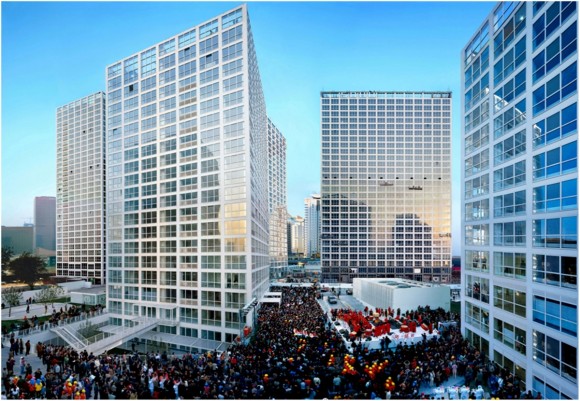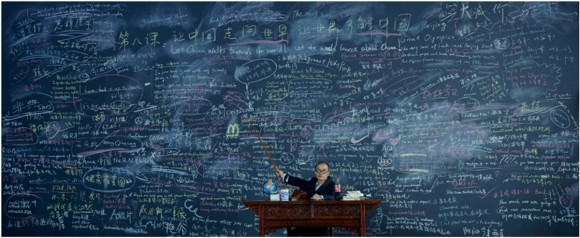The contemporary Chinese exhibition, Spectacle Reconstruction ends on Sunday, 30 March.
About the exhibition:
Political pop and cynical realism. These two slogans, that also created art schools, symbolised the sudden emergence of Chinese contemporary art at the time when the attention of Western countries turned to the East at the end of the millennium. Historical events stand behind both notions: the enthusiastic and daring avant-garde of the 80s faded due to the disappointment after the Tiananmen Square events and the realization of the economical potentials in art. The contemporary scene is naturally more abundant than these schools, however, without them China (besides the economical) wouldn’t be such a great power of fine arts.
The artworks of Spectacle Reconstruction explicitly reflect on the changes in society, politics and history. Most of the exhibiting artists were born in the 60s, thus their visual awakening coincided with the cultural revolution, besides, in their youth, they could immerse in the avant-garde movements due to the opening up of Deng Xiaoping. Though the art scene was still controlled by politics, they had the chance for rebellion. The “Scar art” processed the pains of the cultural revolution in a realistic way, however, the more radical youth, identifying with the western avant-garde, established the “Stars” movement in 1979 – and some of the members are well known artists today. The 1985 “New Wave” grew into a national movement, then the China Avant-garde (Chinese modern art exhibition) was organised in February 1989 in the main scene of the official art, in China National Museum of Fine Arts in Beijing. Amongst the bold performances there was one excelling, the Dialogue by Xiao Lu that has marched into the history of Chinese politics and fine arts due to a shot by a pistol during the performance; the artist fired a shot to her own artwork, a call-box, in the building.
The exhibition party reaches back to this avant-garde spirituality; Wei Guangqing, Ma Liuming, Wang Qianwei and Su Xinping were leading figures of the art scene in the 60s. It also gives space for the criticism of the contemporary consuming society that went through a painful urbanisation; displayed in the photos of Miao Xiaochun and Wang Qingsong.
Zhang Dali however, puts emphasis on the procession of the historical past with his photo collection, documenting political games. He lays original and manipulated propaganda pictures of Mao Tse-tung and the political elite next to each other.
Besides the photos, Spectacle Reconstruction also presents oil paintings, ink drawings, powerful installations – such as the sofa decorated with internal organs by Cao Hui – and seven video works. We may see the motion pictures recorded in a female lavatory of a popular night club by the most known Chinese female artist, Cui Xiuwen and the video clip of Zuoxiao Zuzhou, in which Ai Weiwei, the most popular Chinese artist in the West, singing and acting the story of his arrest.
Many artworks of the exhibition in MODEM were presented in the this year’s Biennale of Venice, the most known and recognised event of the contemporary art.
Academic curator: dr. Krisztián Kukla
Curator: Yu Ke
Co-curator: Li Keke
Exhibiting artists: Fan Bo, Yang Jinsong, Cao Hui, Su Xinping, Miao Xiaochun, Zhang Dali, Huang Yihan, Ma Liuming, Yang Qian, Wang Qingsong, Liu Qinghe, Wei Guangqing, Pang Maokun, Wei Jia, Cui Xiuwen, ZOO X (Zuoxiao Zuzhou), Wang Jianwei, Chen Chieh-Jen, Zhou Xiaohu




















